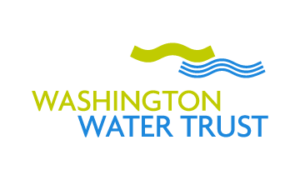Our Focus Areas
Protecting Washington’s Freshwater — So Fish, Farms, and Communities All Thrive
There is no one-size-fits-all solution to restoring Washington’s rivers and streams. That’s why we work hand-in-hand with partners throughout the state to craft creative solutions in the following four key areas.
Helping Rivers Flow
So that we have sufficient water instream when and where it is needed most for fish and the environment.
At the right time, at the right place, even just a small amount of water instream can make all the difference. Since 1998, our core work has been to purchase or lease water from water rights holders to leave instream to improve and protect flows, especially during periods that are critical to the survival of imperiled salmon and steelhead.
We build positive partnerships with landowners and water rights holders. All of our water transactions are voluntary and market-based. Once we acquire water to leave instream, we work to keep it there.
We collaborate with water rights holders to restore water to our streams in other ways too: using more efficient irrigation methods, selecting more profitable crops and cycles, and switching water sources from small tributaries that can’t handle much stress to larger rivers.
Reconnecting Water in the Landscape
To restore the natural hydrological function of our forests, wetlands and floodplains.
Our land and water are deeply connected. Damage to our landscapes has fragmented our natural hydrological system and reduced the land’s ability to store and release water. Forests that have been clear cut no longer absorb water to release slowly into our streams; dried up wetlands no longer feed our groundwater; and floodplains that have become disconnected from rivers no longer provide important habitat for salmon and steelhead.
In response, we are working to make our natural hydrological system whole again. By promoting better forest management practices, wetland restoration throughout river systems, and the reconnection of floodplains to rivers and groundwater we are restoring a healthy connection between our land and water that will have long-term water supply benefits.
Planning for Future Water Use
To meet the long-term water needs of growing communities while ensuring enough water stays instream for fish.
Washington is growing and developing rapidly which is fueling an increased demand for water. This increased demand combined with a changing climate means that communities need to plan for their future human and environmental water needs, or they will risk running out.
In response, we participate in and facilitate diverse groups in places like the Methow and Walla Walla to proactively plan for long-term community water needs while ensuring that enough water will stay in our rivers, streams and aquifers to support fish and the environment over the long run. We also operate water banks such as the Dungeness Water Exchange that allow growth and water-use flexibility in watersheds where no new water uses are allowed.
Developing Alternative Water Sources
To reduce impacts on our rivers and streams, particularly during late summer.
In order to create a sustainable freshwater future for Washington, we must think outside of the box, take advantage of the times when water is abundant and squeeze more out of each drop. This is why we are working to develop alternative water sources to reduce impacts on our river and streams – particularly during late summer when rivers can least afford to give their water up.
Water storage – in the form of small-scale reservoirs – and recycled water are two strategies that have great potential in Washington. We are developing these two alternative water sources in places such as the Dungeness and the Sammamish Valley where they have the potential to provide permanent relief and climate-resiliency to both water users and fish.
